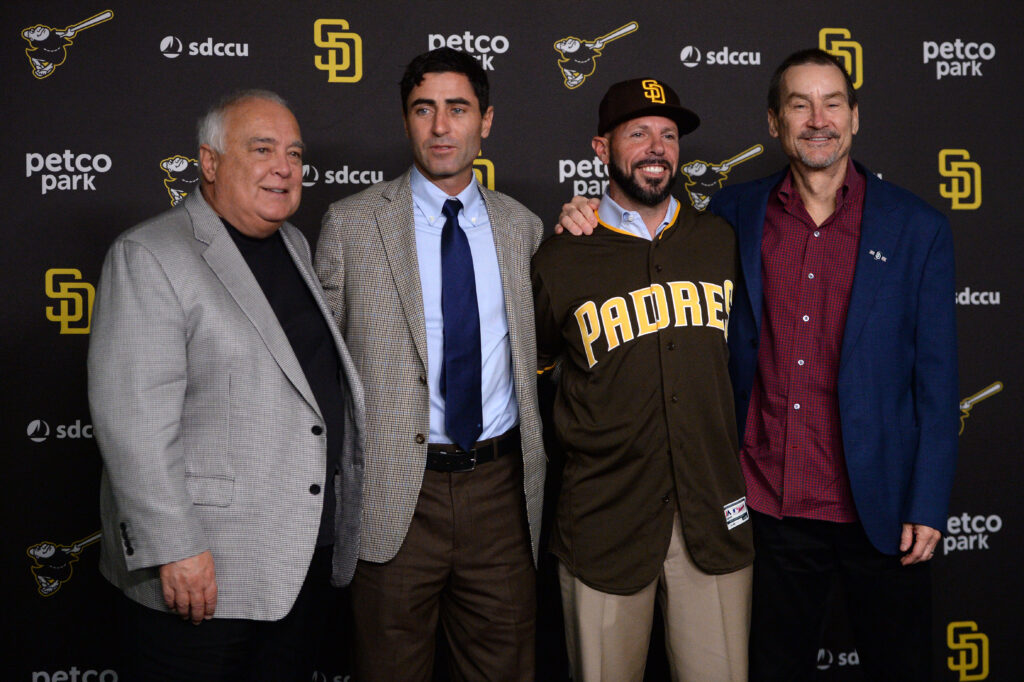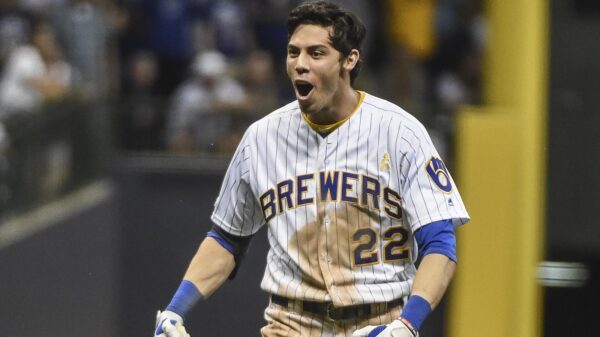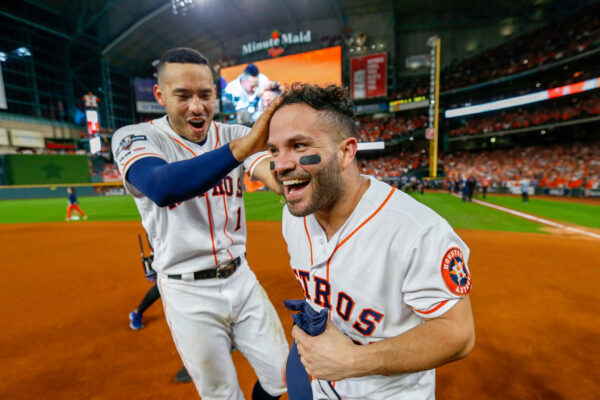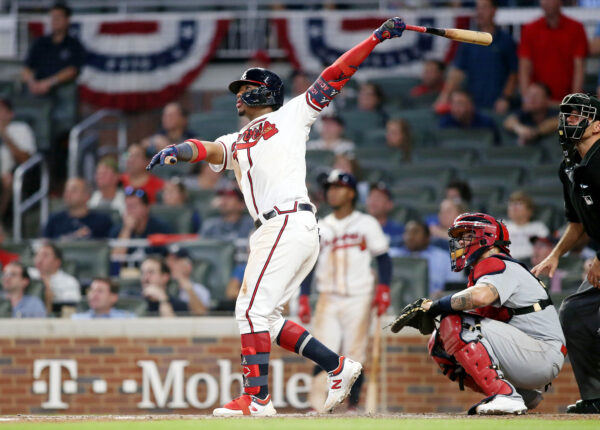Other rebuilding examples offer hope for the 2020 San Diego Padres

Mandatory Credit: Orlando Ramirez-USA TODAY Sports

2016-2018 Milwaukee Brewers
Milwaukee has never won a World Series, but they have made the playoffs four times since the Padres last tasted postseason baseball, and they were one game away from the World Series in 2018.
However, they first lost 94 and 89 games in 2015 and 2016, respectively. In 2016, they had a 23-year-old starting pitcher named Zach Davies, who is about to begin his first season with the Padres. This is not to suggest Davies is the secret sauce San Diego needs for a playoff berth, but he has “been there, done that.”
Davies hurled 163 innings as a rookie in 2016, with a respectable 3.97 ERA and 107 ERA+ on a 73-89 team. The Brew Crew had a solid bullpen, ranked 12th in ERA in 2016, but like the Padres this offseason, they did not sit idle; they made their bullpen even better, turning the unit into the ninth-best in all of baseball in 2017.
Thanks to that bolstered bullpen, helped by the emergence of All-Star closer Corey Knebel, the Brewers boosted their win total by 13, finishing 86-76 and missed the Wild Card Game by one game. They had a lackluster offense, ranking 21st in average and 20th in runs, but the pitching carried them extremely close to a postseason berth.
It set them up nicely for a 96-win, divisional championship campaign in 2018, where, as mentioned before, they were one game against the Dodgers away from their first World Series berth since 1982. The 7.6-WAR addition of former MVP Christian Yelich certainly helped.
The 2020 Padres lineup will be much better than that of the 2017 Brewers that won 86 games. With San Diego having strengthened the bullpen much like Milwaukee did, the Friars too can pile on 13 more wins this year, which would bring them to 83-79, another total most fans would be happy with.
2014-2017 Houston Astros
Unless you have been living under a rock or taken a winter vacation to Mars, you know that the Astros’ organization and its supposed “rebuild” are under extreme scrutiny, and its validity has been rightfully questioned. However, they too had to lose and often lose before reaching their summit, cheapened as it may be.
Houston had three straight 100-plus loss seasons from 2011 to 2013, and it was in 2014 where they finally seemed to climb out of the hole and reach a new level of the rebuild. The 2014 Astros had the same record as the 2019 Padres club, at 70-92. They, too, had budding young prospects on the rise, much like Tatis, one of them being George Springer.
Springer was the 23rd-ranked prospect in baseball in 2013. He came onto the scene in 2014 and struggled at times, more than Tatis did, but finished with a 126 OPS+ and 2.0 WAR. He was setting himself up for a solid 2015, and eventually, three All-Star selections, two Silver Sluggers and World Series MVP (the validity of these accomplishments is now, of course, being questioned).
Another stud prospect, at shortstop as well, arrived in time to buoy the Astros to a new level, in Carlos Correa. In his rookie year of 2015, he recorded a .857 OPS, 135 OPS+, and 4.3 WAR in 99 games, earning Rookie of the Year honors. That sounds awfully familiar to Tatis’ .969 OPS, 152 OPS+, and 4.2 WAR in 84 games in 2019.
The Astros ended up winning 86 games in 2015, which got them a Wild Card berth, where they defeated the Yankees in New York and lost to the Royals in the deciding Game 5 of the A.L. Division Series. This is a prime example of the mentality “just get into the dance, and you never know.” They were one win away from playing in the ALCS without having won their division, just a year removed from losing 92 games.

Houston also had an emerging star on the mound in Dallas Keuchel. He put up Paddack-like numbers in 2014 before exploding to a Cy Young-winning 2015, with a 2.48 ERA and 157 ERA+.
Even if Paddack does not achieve those heights, the Friars have at least two more shots to strike gold with top prospects MacKenzie Gore and Luis Patiño looming.
Acquiring veterans like Evan Gattis and Colby Rasmus helped the Astros along before the trade of Justin Verlander pushed Houston over the top towards their now tainted title of 2017.
The Friars have brought in several veterans, including Drew Pomeranz, Jurickson Profar, Emilio Pagan, plus the aforementioned Tommy Pham and Zach Davies. Sometimes an injection of veterans takes teams to the next level, as the Astros.
Going from 70 wins to 86 and a playoff berth in one year like Houston accomplished would be miraculous for San Diego, almost too good to be true- like most of the Astros’ accomplishments of the last three years.
2017-2018 Atlanta Braves
Moving on to a more legitimate and promising example, the Braves burst back onto the scene in 2018 after uncharacteristically missing the playoffs four years in a row. They lost 90-plus games from 2015 to 2017 while they waited for a deep, rich farm system to ripen. Sound familiar?

It was in 2017 where things started to look promising. They had an MVP-level bat in Freddie Freeman, much like the Friars do in Manny Machado or Tatis, with young and inexperienced players around him. The youngest was 20-year-old Ozzie Albies, who immediately impressed, with a .810 OPS and 1.3 WAR in just 57 games (a 3.7 WAR pace).
With Freeman, a young gun in Albies, and a hodgepodge of a rotation, the Braves made it through 90 games precisely at .500, at 45-45. This should ring a familiar tune to Friar fans as the Padres did the same exact thing with a similar collection of talent through 90 games last season, going 45-45.
As they did with the Padres in the second half of the year, the wheels completely fell off for the inexperienced Braves as they stumbled to a 72-90 record, finishing with a 23-34 record in the final two months of the year. San Diego finished 20-35 in that same stretch last year.
Then in 2018, a kid named Ronald Acuña Jr. came to the rescue, posting a 4.1 WAR as a rookie (see Tatis’ rookie season), with a .917 OPS over 111 games, eventually winning Rookie of the Year. Atlanta was bolstered by another strong season by Freeman as well as the emergence of starter Mike Foltynewicz, who posted a career-high 143 ERA+ after never having a season above 96 in four years previously. The Braves went from 72 wins to 90 and a National League East division crown.
Paddack can reach that number this year after his 127 ERA+ audition in his rookie campaign.
Tatis, given a full season of health, will compete with Acuña as the best under-23 player in the entire game. These teams are on similar trajectories.
Atlanta went from 72 wins to 90 in 2018 and then 97 in 2019, winning a second straight division title.
[wpedon id=”49075″ align=”right”]
If the Padres mirrored that jump, they would win 88 games in 2020, which would surely put them squarely in a Wild Card hunt, maybe even in the Wild Card Game itself.
Not every rebuild is the same, and not every organization is run the same way. This is just to offer precedence for the jump in win total the Padres are hoping for. Ownership has made it clear that anything worse than an around-.500 or better year will be met with swift action and consequences. That is asking for the Friars to win at least 11 more games than it did in 2019, which definitely can be done.
Considering what the Padres added, plus the hopefully increased health of Tatis, the unshackling of Paddack from his innings limit, and the rebound of Manny Machado, will propel this team to its best record since 2010.
Native of Escondido, CA. Lived in San Diego area for 20 years. Padres fan since childhood (mid-90s). I have been writing since 2014. I currently live near Seattle, WA and am married to a Seattle sports girl. I wore #19 on my high school baseball team for Tony Gwynn. I am a stats and sports history nerd. I attended BYU on the Idaho campus. I also love Star Wars.